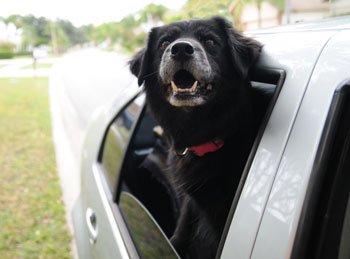Dog restraints fail in auto crash tests 100 percent of the time, study says

Some areas such as New Jersey have considered implementing laws mandating that drivers protect their pets by securing them with restraints. But according to a recently released study from the Center for Pet Safety, the restraints themselves are not effective at protecting pets from harm.
The organization released the results of its 2011 study, which found a 100-percent failure rate for all of the large-dog restraints it tested. Not one of the products was effective at protecting pets or humans in the event of a crash, the Center for Pet Safety said.
To conduct the study, the organization used a 55-pound fake dog strapped into various pet restraints. They then simulated a collision in a car traveling at 30 miles per hour to see how the crash-test dog would fare.
Researchers reported that in addition to dogs being unlikely to survive the accident, they become a threat to humans when their bodies become missiles. Also, the restraints can potentially harm dogs by choking or squeezing them when the harness tightens during a crash.
The Center for Pet Safety declined to specify which manufacturers’ restraints performed poorly in tests, but the group said it is collaborating with Subaru to establish safety testing standards for restraints. They will then be able to advise restraint manufacturers on how to better test their products, as well as eventually name the top-performing products.
View videos of the crash simulations at the Center for Pet Safety website.
- Behavior (11)
- Caring for your pet (263)
- cat (4)
- Community Events (19)
- dog (6)
- From Our Clients (15)
- Happy Tails (8)
- News (418)
- Press (53)
- Products (2)
- Questions (4)
- Recalls (1)
- Special Offers (5)
- Tips & Advice (231)
- Uncategorized (19)
- Veterinary Services (48)
